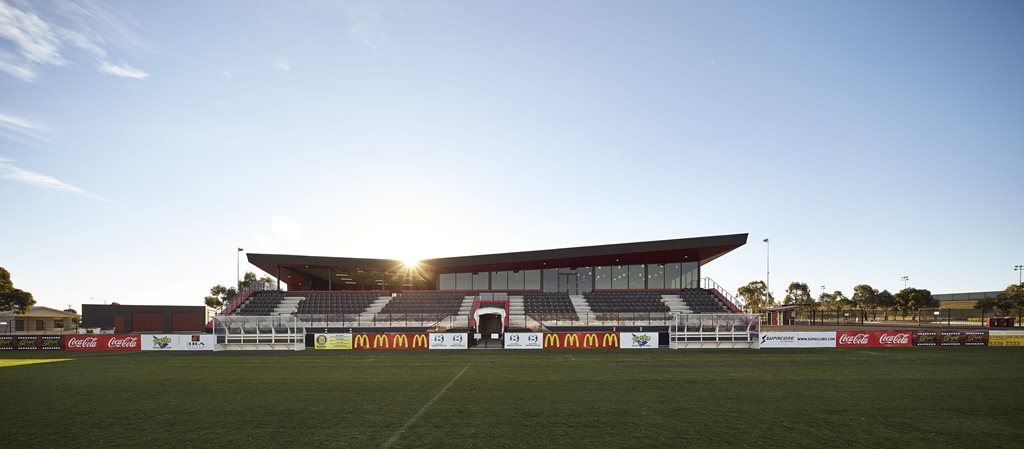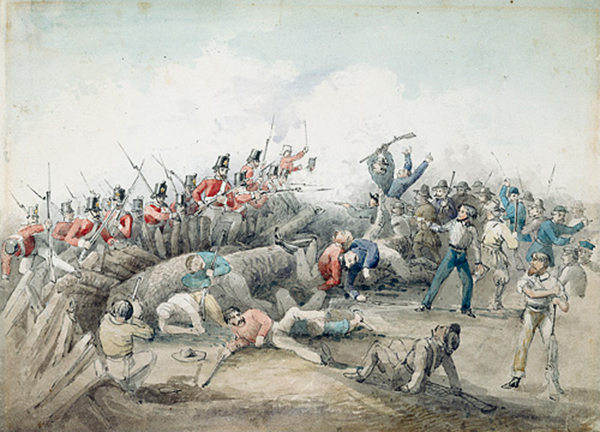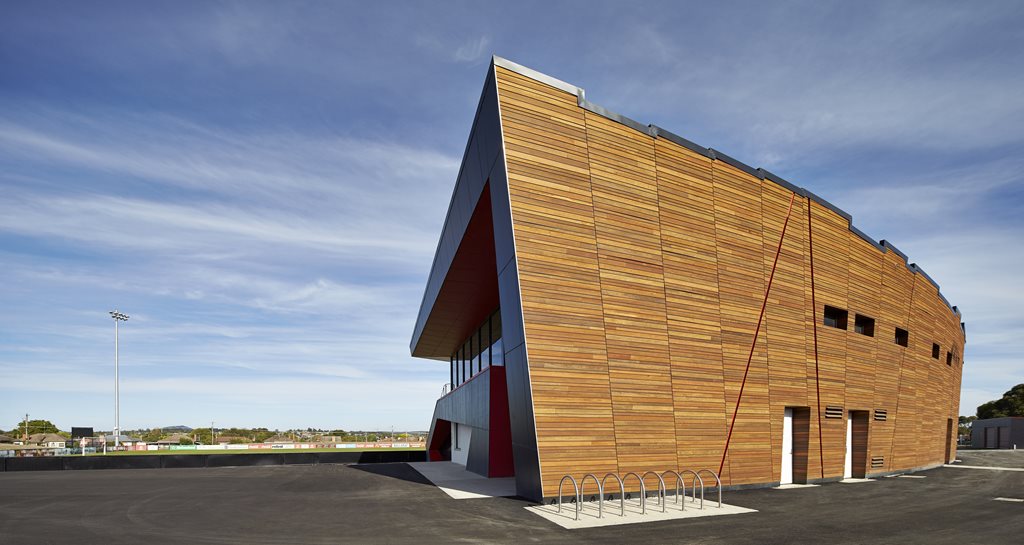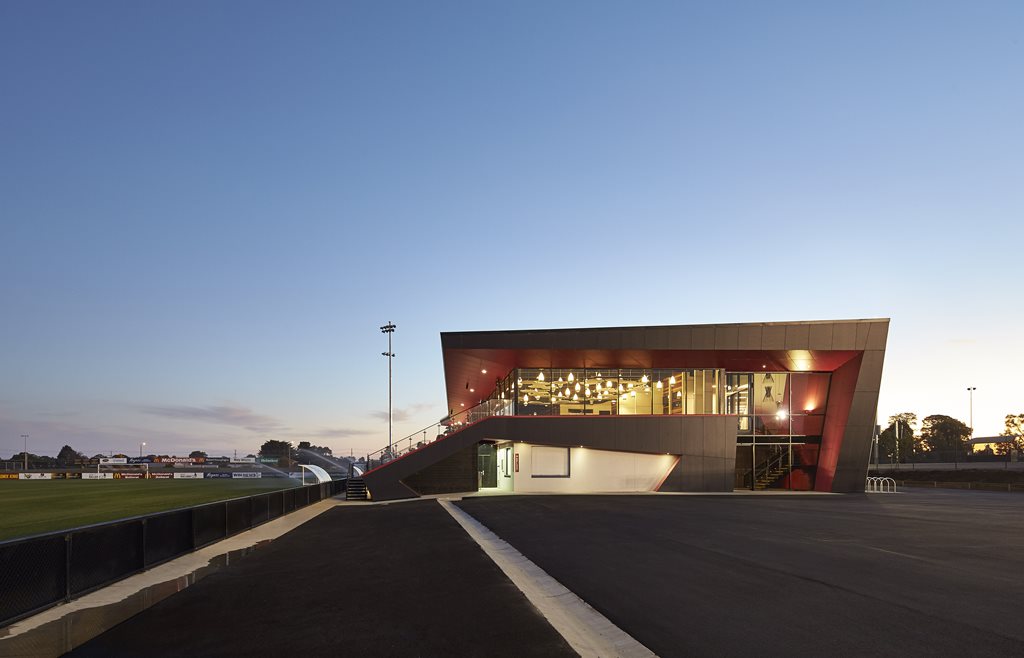Australia’s Asian Cup win of 2015, undoubtedly a glorious moment for all Aussie sports lovers, may have already faded from the minds of the larger community. But a soccer ground in regional Victoria continues to look at past accomplishments even as it sets its sights on the next elite A-level or international game.
The Ballarat Regional Soccer Facility (BRSF) had hosted Bahrain’s national soccer team during last year’s AFC tournament, and there was no questioning why. Selected as a finalist in the 2016 Sport, Recreation and Play Industry Innovation, Facility Design & Development Awards, the sports facility boasts a world-class natural turf stadium pitch with a “quality unmatched in Australia outside of major metropolitan stadiums”.

The BRSF building comes with a 2 Star FIFA-rated turf playing pitch and synthetic training ground
The centre isn’t designed to sit quietly either. Designed in response to a brief of providing a stadium for world-class soccer, the facility’s soaring structure is dominated by the juxtaposition between a vast hand crafted timber “stockade” wall to the western perimeter, and a dynamic and sustainable building. This sense of contrast was created purely for the regional Victoria soccer community, and involved a customised design that emulated the experience of a world standard soccer stadium.
Taking into account Ballarat’s rich cultural heritage, the concept of the Eureka Stockade wall emerged as the leading design principle for BRSF. The 1854 Eureka rebellion, which saw the gold miners of Ballarat revolt against the colonial authorities, is a significant event in the development of Australian identity and democracy. The rebellion had culminated in a siege at a stockade made by the miners – a makeshift wooden barricade enclosing about an acre of the goldfields. Twenty-seven digger deaths were officially registered, although the actual death toll is thought to be much higher.

The stockade wall by K20 Architecture at the BRSF draws inspiration from this battle, but instead of being hastily constructed, is well thought out. It is designed to embrace the community and protect the building’s program and playing field from the prevailing winds and harsh western sun. Emerging from the landscape, the wall is equal parts grey ironbark, spotted gum and stringy bark. Its curvilinear form in plan is the starting point for the stadium, which contains a grand stand with 500 seated capacity, conference and catering facility for 200, external viewing decks, players change rooms and media rooms, as well as sports administration facilities.

The Stockade wall enabled the facility to be built in sections
The distinct and rugged outline of the Stockade wall is not the facility’s only point of architecture merit. The building is also characterised by distinct sectional cuts to the north and south, accentuated by bold black skeletal forms and flashes of red in the eaves – the team colours of hosts, the Ballarat Red Devils.

History and design aside, the primary purpose of the building was to create a world-class experience for spectators and players.
“This is illustrated in the alignment of the primary players’ race to the centre line of the playing pitch, which enables players of all ages and standards to experience key aspects of the playing on the ‘big stage’,” the design team notes.

In addition, the design brings viewers closer to the playing pitch. The coach’s boxes are transparent, with the grand stand elevated above ground level to create a direct viewing line to the playing surface.
Sustainability was another overriding priority for the architects and client. Passive solar design features include high-level extended eaves to reduce the building’s heat load, while natural ventilation is maximised via the inclusion of thermal chimneys and mixed mode heating and cooling through an under floor air plenum to the first floor.
The timbers used on the Stockade were furthermore sourced locally and recycled, a move to assist with carbon sequestration and reduce the facility’s carbon footprint. Even the grandstand seating is made of recycled plastic, and manufactured using off-the-shelf pre built concrete construction planks.
Other environmentally sensitive materials and fittings incorporated include low energy light fittings, low VOC paints from Haymes, and a carpet with 40 percent recycled content.


Durable finishes were employed for lower maintenance and longevity, with all leftover products from construction kept in a marked sealed container for future use or disposal via special chemical waste collection programs. All dried empty containers were recycled and disposed of via council metal recycling facilities.
Altogether, locally sourced and manufactured materials and components achieved approximately 80 percent of local content outcomes – a percentage K20 Architecture hopes to maintain in all its future projects.
PRODUCTS
THERMAL CHIMNEYS
TYPE: FIBERGLASS BOARD
SURFACE FINISH: MATT DUCT LINER
LOW VOC PAINTS
HAYMES PAINT, ULTRA-PREMIUM ACRYLIC SEALER UNDERCOAT
HAYMES PAINT, ULTRA-PREMIUM HIGH GLOSS ENAMEL
HAYMES PAINT, PREMIUM HIGH GLOSS ENAMEL
UNDER FLOOR AIR-PLENUM
ECOCANOPY, ECOAIRCURTAIN
GRANDSTAND SEATING
COSSETT, RECYCLED PLASTIC WITH DOUBLE DIPPED ZINC STEEL FRAME WITH COLOUR POWDER COAT FINISH

